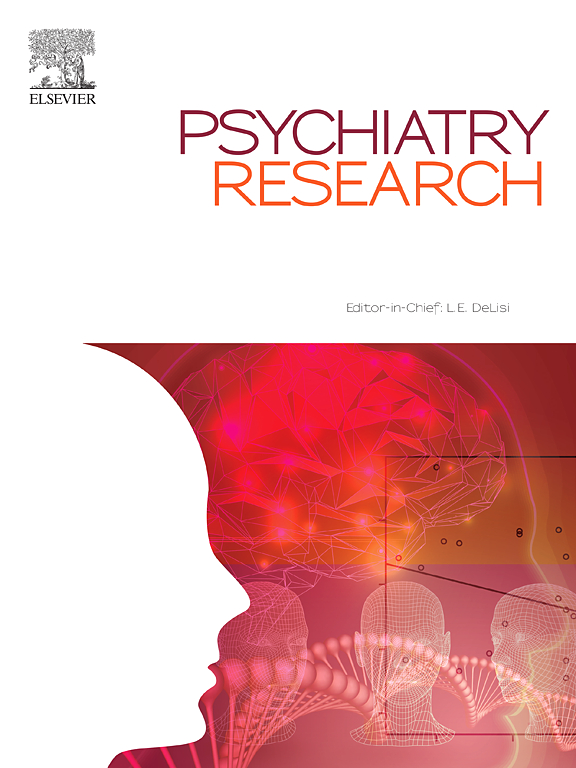Disrupted default mode network connectivity and its role in negative symptoms of schizophrenia
IF 4.2
2区 医学
Q1 PSYCHIATRY
引用次数: 0
Abstract
Schizophrenia is a complex mental disorder characterised by positive symptoms, negative symptoms, and cognitive deficits, with recent studies suggesting that disruptions in the default mode network (DMN) may underlie many of these symptoms. In this study, we used graph theory analysis of resting-state functional magnetic resonance imaging data to investigate differences in the topological organisation and functional connectivity of the DMN in patients with schizophrenia, using two independent datasets of patients and healthy controls. The findings revealed significant group differences in the DMN of patients with schizophrenia, particularly within the core-medial temporal lobe (MTL) subsystem, characterised by lower shortest path length, clustering coefficient, and small-worldness, indicating less efficient network organisation. Weaker functional connectivity in the core-MTL subsystem was correlated with higher avolition-apathy scores, highlighting the role of DMN connectivity patterns in negative symptoms. These results, validated across two independent datasets, emphasise the robust and generalisable association between schizophrenia and DMN network features, less efficient topological properties, and weaker functional connectivity. This underscores the importance of targeting DMN connectivity to alleviate negative symptoms, improve clinical outcomes, and potentially serve as a biomarker for monitoring symptom severity and guiding treatment.
精神分裂症是一种复杂的精神障碍,以阳性症状、阴性症状和认知缺陷为特征,最近的研究表明,默认模式网络(DMN)的破坏可能是许多这些症状的基础。在这项研究中,我们利用静息态功能磁共振成像数据的图论分析,通过患者和健康对照组的两个独立数据集,研究了精神分裂症患者默认模式网络(DMN)的拓扑组织和功能连接的差异。研究结果显示,精神分裂症患者的DMN存在明显的群体差异,尤其是在核心-内侧颞叶(MTL)子系统中,其最短路径长度、聚类系数和小世界性均较低,表明网络组织效率较低。核心颞叶(MTL)子系统较弱的功能连通性与较高的逃避-移情评分相关,凸显了DMN连通模式在消极症状中的作用。这些结果在两个独立的数据集上得到了验证,强调了精神分裂症与DMN网络特征、较低的拓扑特性和较弱的功能连通性之间存在稳健且可推广的关联。这强调了针对DMN连通性来缓解阴性症状、改善临床疗效以及作为监测症状严重程度和指导治疗的潜在生物标记物的重要性。
本文章由计算机程序翻译,如有差异,请以英文原文为准。
求助全文
约1分钟内获得全文
求助全文
来源期刊

Psychiatry Research
医学-精神病学
CiteScore
17.40
自引率
1.80%
发文量
527
审稿时长
57 days
期刊介绍:
Psychiatry Research offers swift publication of comprehensive research reports and reviews within the field of psychiatry.
The scope of the journal encompasses:
Biochemical, physiological, neuroanatomic, genetic, neurocognitive, and psychosocial determinants of psychiatric disorders.
Diagnostic assessments of psychiatric disorders.
Evaluations that pursue hypotheses about the cause or causes of psychiatric diseases.
Evaluations of pharmacologic and non-pharmacologic psychiatric treatments.
Basic neuroscience studies related to animal or neurochemical models for psychiatric disorders.
Methodological advances, such as instrumentation, clinical scales, and assays directly applicable to psychiatric research.
 求助内容:
求助内容: 应助结果提醒方式:
应助结果提醒方式:


